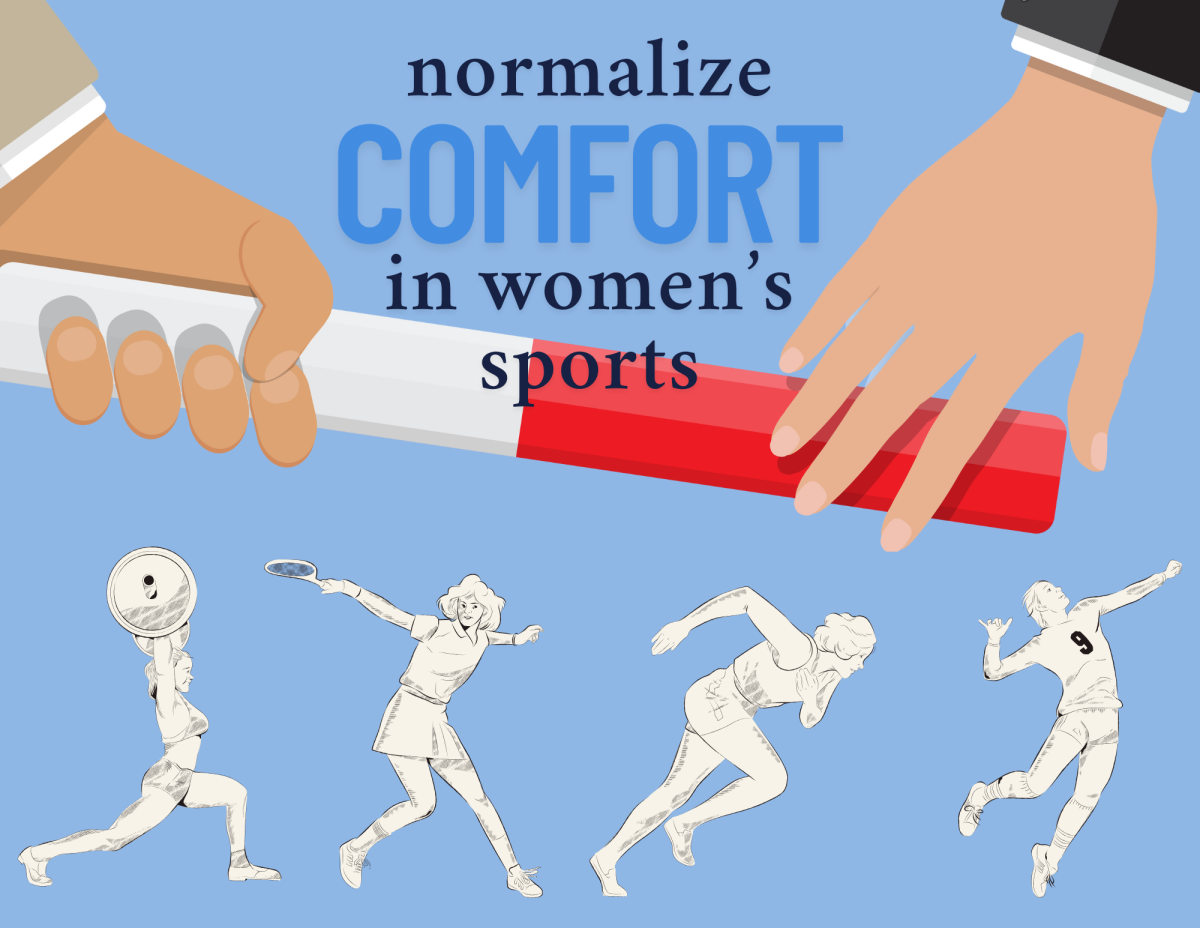It is no secret that some sports have very different versions for their male athletes versus their female athletes. Schools are no different than the NBA or major track teams running in the Olympics. The stark differences have been around for years, with little change when people speak out about it.
The uniforms in most women’s sports are typically far more revealing than uniforms worn by men, and most people, especially men, do not even bat an eye. In their minds, it has always been like that, so why change? In this day and age, though, having women’s uniforms be skimpy and more revealing seems outdated, especially when women typically say that they could do without the revealing uniforms.
There are other cases when women’s uniforms are “too revealing” to men, and there are restrictions placed on shorts, skirts and tops with larger, more revealing necklines. There is little to no in-between for women’s uniforms; they are either made skimpy for commercialization or considered too revealing and offensive to men.
When you keep in mind the fact that in some sports, the uniforms are skimpier to appeal to the male audience and gain more views, it becomes strange that in other cases, women’s uniforms are considered too revealing and are said to “offend men.” The idea of uniforms being dictated by men when the women’s comfort levels are jeopardized seems to not make sense once more thought is put into it.
One could argue that the low-cut uniforms used in women’s sports help the athletes; the tighter and shorter the bottoms, the better. However, in the male version of those same sports, the uniform bottoms are longer, so clearly this offers no hindrance to the athlete. There is no reason that in a sport like Track and Field, women could not have slightly longer shorts rather than the small, bikini bottom-like shorts they wear when they run.
In beach volleyball especially, there is no reason why the approved uniform set by the Olympic committee was a bikini and bikini bottoms. It has been said by viewers and the players that the uniforms seemed designed specifically for the male eye to attract more viewers and gain more followers in the sport, especially since the sport was not popular to watch on the Olympic channels on television. Women’s bodies should not be capitalized upon, especially not for entertainment value.
Uniforms are typically dictated by men, which furthers the idea that women have no control over their bodies. This concept is not new, but it is one that should be discouraged, especially in this current culture and state of the world. Younger women need to be empowered and lifted up, not brought down by men around them. Though uniforms may seem insignificant, they can have a lasting impact on the lives of women.



